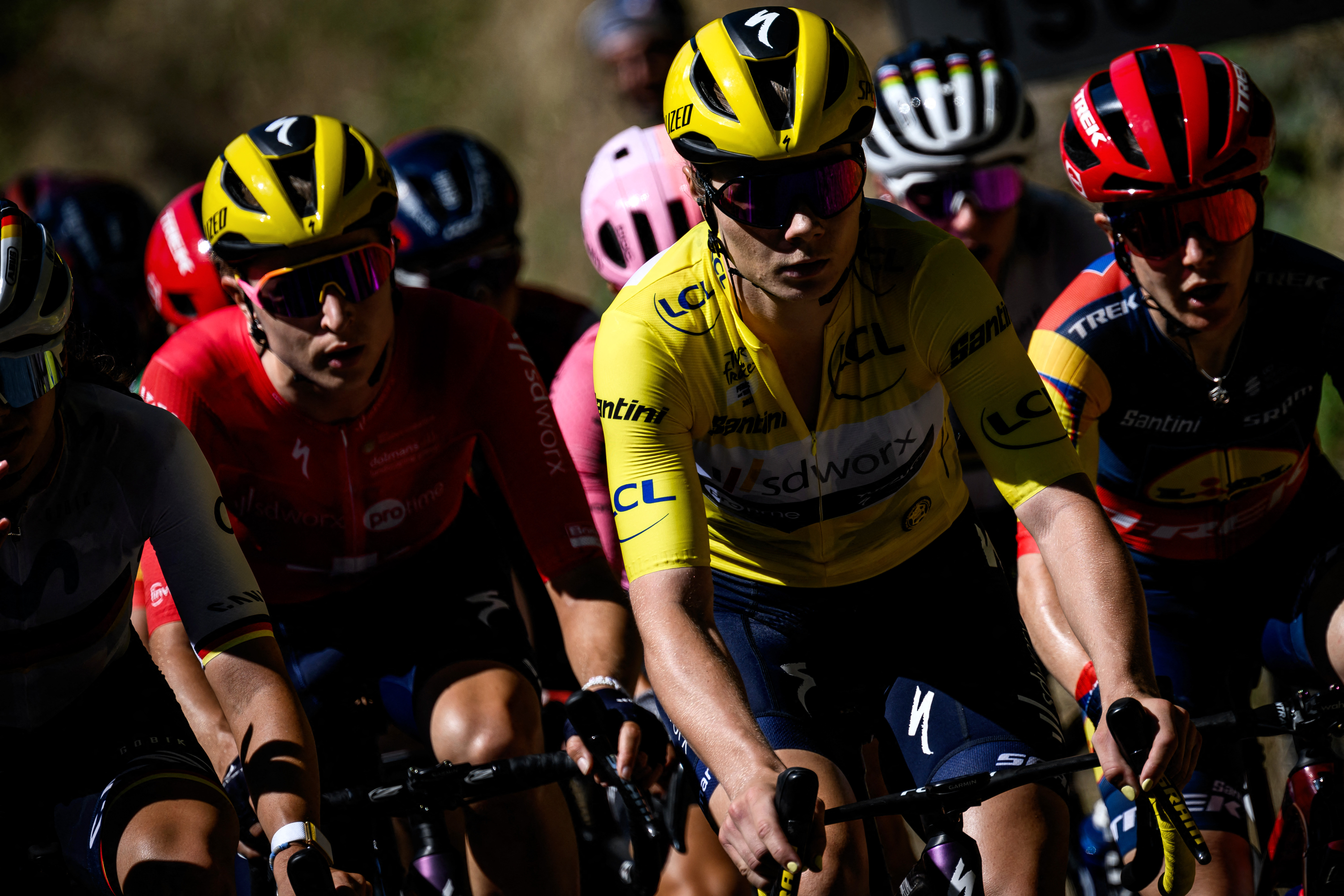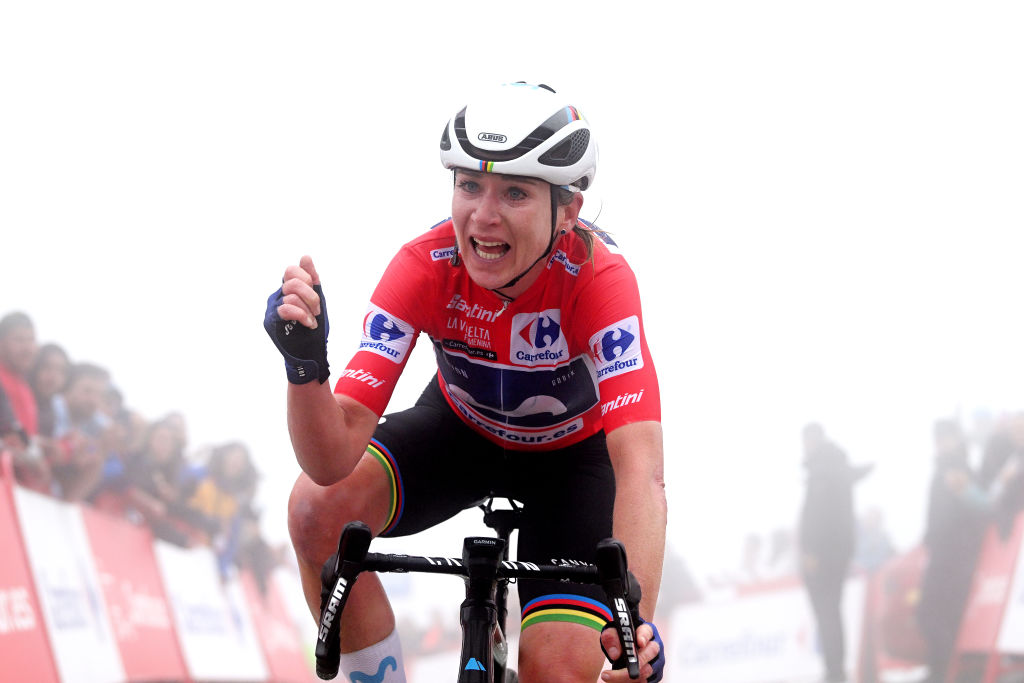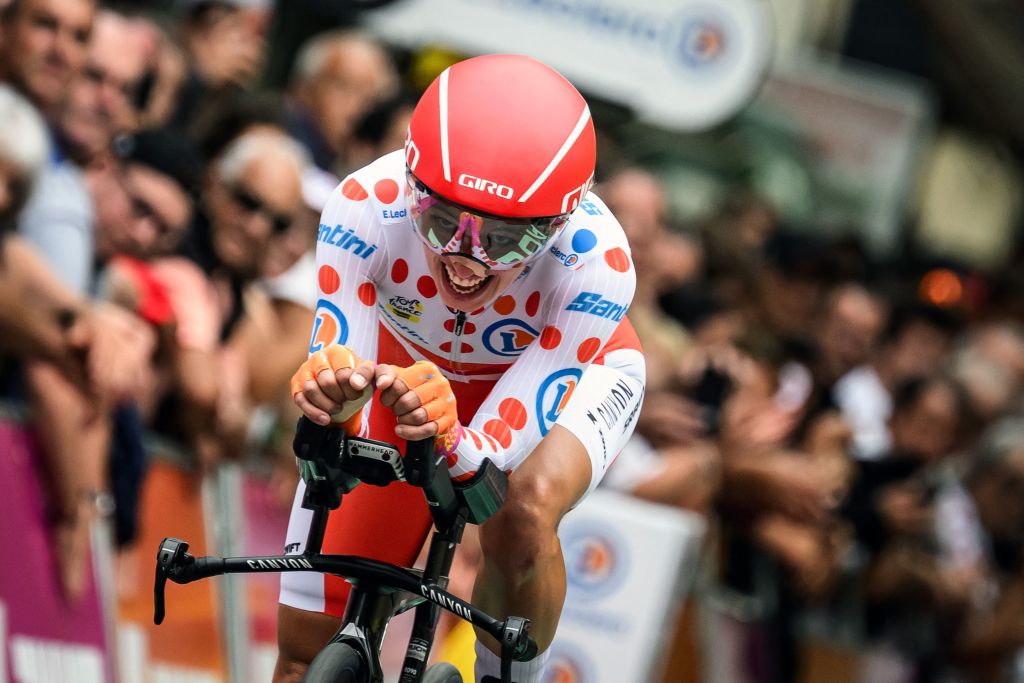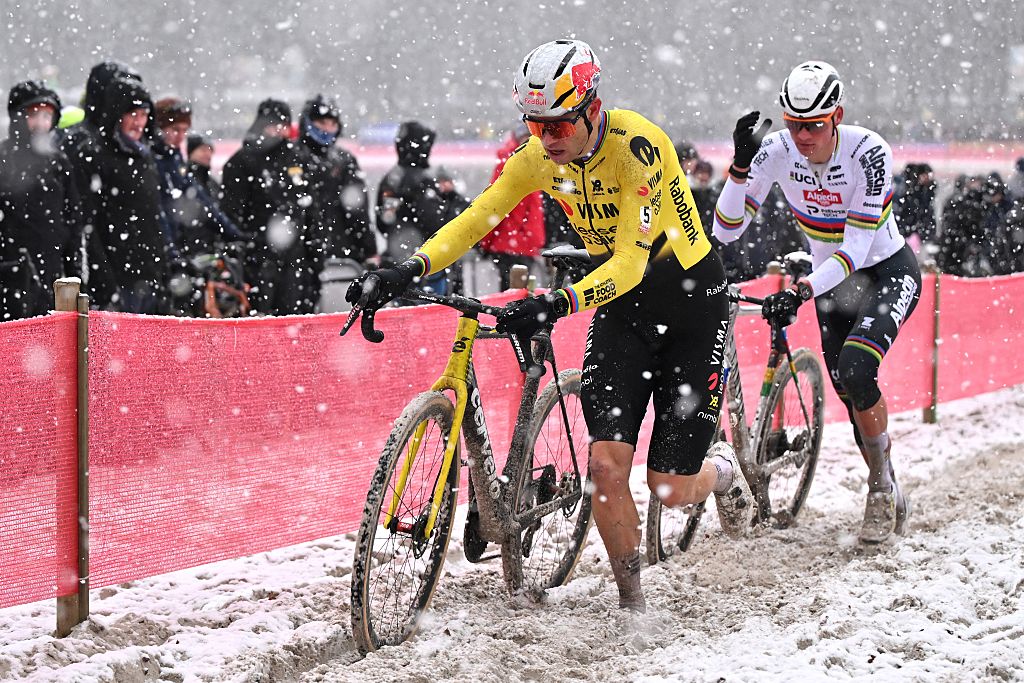Should women’s cycling have three-week Grand Tours?
Race organisers are open to lengthening events, but teams are concerned that budgets and infrastructure are not yet sufficient

Giro, Tour, Vuelta – in men’s cycling, these three words bring to mind three weeks of drama, glory and pain. The men’s Grand Tours are steeped in tradition and are set apart from the rest of the calendar by their length – which also contributes to their reputations being among the hardest and most extreme elite endurance sports events in the world.
The men’s Grand Tours are, commercially, the biggest races on the cycling calendar, so should the women’s versions of the events follow suit by extending their number of days?
Since its return in 2022, the Tour de France Femmes avec Zwift has provided a boost to the viewership of women’s cycling. More than 23 million watched the 2022 edition on TV, according to a report by Zwift. Extending the race in future could further increase the benefits and bring a new dimension to women’s racing.
Cyclingnews has been told that, in principle, the organisers of two of the events are open to extending their races in the future. New Giro d’Italia Women organisers, RCS Sports, were unavailable for comment.
Between 2017 and 2023, May’s La Vuelta Feminina grew from a one-day race to seven stages. When asked about extending the race further, event organiser Unipublic told Cyclingnews: “It is not something to which we are totally closed, but it will not be in the near future. Last year’s La Vuelta Femenina was a successful edition, and we must consolidate this event progressively. When considering extending the duration of the race, there are many factors to take into account.”
Tour de France Femmes avec Zwift organisers ASO gave a similarly measured response, saying: “We want to take things one step at a time. Our first objective, our duty as organisers, is to anchor the Tour de France Femmes avec Zwift in the international sporting landscape and grow it over time.”
So, taking the organisers at their word, significant extensions to these races will not happen in the immediate future. However, it is a very real possibility thereafter.
The latest race content, interviews, features, reviews and expert buying guides, direct to your inbox!
Having spoken to several team managers and riders from across the women’s peloton, Cyclingnews has learned that opinions on the idea are mixed, with excitement for growth tempered by concerns for sustainability.
An already packed schedule putting teams under strain

One of the major practical issues of lengthening the Giro, Tour and Vuelta raised by riders and managers was the already congested calendar in the Women’s World Tour. It’s felt across the peloton that this is already a problem to be addressed, even without the prospect of longer stage races.
In May, La Vuelta Feminina launches the peloton into a challenging stretch of four World Tour stage races in four weeks. Extending the race would worsen the strain, pushing teams to race multiple events at the same time.
As the sport grows and becomes more professional, the demands on teams and riders also grow. The reality is that team budgets and infrastructures are already fighting to keep up.
Natascha den Ouden, General Manager of Team AG Insurance-Soudal-QuickStep, fears that extending the grand tours may push the capacity of some teams to breaking point.
“When we see the World Tour calendar growing, we also have to look at whether it is doable for the whole peloton because the season starts in January and ends in October. A lot of teams are still struggling to do a double programme, or for some, it is simply not possible as they don't have enough riders or staff to cover. Salaries are rising, but budgets sometimes not,” Den Ouden said.
Longer stage races mean more of everything: more staff, more equipment, more nutrition, and more risk of injury. All of which means more expenditure.
It’s a widely-held opinion that many women’s teams just aren’t big enough to cope with the rigours of the women’s calendar as it currently is, especially with women’s cycling becoming more professional. If the sport is to grow and stage race length too, team pockets must also deepen.
St Michel-Mavic-Auber 93 are one of the teams who struggle to race more than one event at the same time. Charlie Nerzic, part of the team’s management, thinks that the calendar would need to be adjusted to allow the smaller outfits to race longer Grand Tours.
“Women's teams do not have enough riders (and budget) so far to consider having a double-front calendar like men's teams do. So the calendar has to be smart in that way… If you add long races three times a year, the calendar will have to be reorganised to let teams plan their season,” Nerzic said.
Teams are currently capped at a maximum of twenty riders, ten fewer than their male counterparts. Team Director at Lidl-Trek, Ina Yoko Teutenberg, thinks that longer races could be positive for the sport, but teams must be allowed to recruit more riders to cover the added workload.
“It would be nice if the big ones grow into ten, twelve, fourteen-day stage races, but there needs to be a smart way about the schedule too because our programme is already extremely packed. It's really hard when the teams are not so big, so the UCI has to work on a better race schedule during the year,” Teutenberg suggested.
“We have the strength to be able to do longer tours”

Riding a three-week Grand Tour is a challenge for any rider. Male Grand Tour debutants often find the step up to longer races a gruelling experience. But step up, they do, and Ashleigh Moolman Pasio of AG Insurance-Soudal-QuickStep believes that the women’s peloton would be able to do the same.
“As female athletes, we have the strength to be able to do longer tours, no doubt in my mind,” the South African said.
The women’s peloton may well be able to do longer stage races, but den Ouden believes that a problem arises in the depth of women’s cycling and questions whether a three-week Grand Tour would accentuate the gap between the best riders and teams and those who are weaker.
Den Ouden said: “We have simply not enough women who can compete at that level so long physically now. The differences in the level between the top riders and the sub-top is already very big and will only be bigger by making it so long.”
Eri Yonamine, who rode the Giro and Tour in 2023 for Human Powered Health, felt the difference that Den Ouden describes in those races. The Japanese rider said, “We have big gaps between the teams, even the World Tour teams. SD Worx, [Lidl]Trek, Movistar, they have a lot of people, lots of staff, lots of equipment, everything, but some teams don’t have enough for racing three weeks. We can survive ten days, but we can't survive three weeks compared to the biggest teams.”
For Yonamine, this difference translated across to her performance on the bike. “I was completely exhausted after ten days. From day four, I can't hang on, I feel it's completely another level.”
More than ten minutes separated the top ten on the general classification of the week-long Tour de France Femmes in 2023, and the final rider was more than two hours down.
Teutenberg added: “If it's not competitive for three weeks and the peloton is not ready, then I don't think it helps women cycling.”
The uniqueness of women’s cycling

The most fundamental question remains - whether extending the women’s Grand Gours is a good idea at all.
There are possible commercial benefits, and Nerzic suggests that an expanding calendar “means women's cycling is stepping up.” Perhaps holding races the same length as the men portrays the parity that the women’s sport seeks.
On the other hand, perhaps the root for a push for longer stage races comes from a want for imitation. Maybe some feel that in order for women’s cycling to develop, it must look like men’s cycling.
Ronny Lauke, Team Manager of Canyon-SRAM, pushes back on this idea.
“Women’s cycling should strive to keep its own strengths and uniqueness for as long as possible,” Lauke says. “The racing is often aggressive, unpredictable, and exciting to watch from start to finish. It does not need to become a carbon copy of the men’s calendar or copy the men’s Grand Tours.”
Longer stage races could remove that sense of unpredictability, the dominant teams may gain a tighter grip on the racing. Perhaps if the 2023 Tour de France Femmes was three weeks long, Lotte Kopecky wouldn’t have sprung the surprise of the race to finish on the podium. The shorter, more dynamic course allowed one of the best Classics riders in the world to stay in touch with the climbers. It’s this unpredictability, this lack of control, that makes women’s cycling exciting to watch.
It’s this central issue that leads Moolman Pasio to conclude: “Do we just want to follow in the footsteps of men's cycling, or is it better to continue to create our own legacy? In my opinion, I believe it's better to create our own legacy, and in that case, I support shorter Grand Tours.”
Teutenberg adds: “I think a two-week stage race will be a nice thing. I'm not necessarily thinking three weeks at this stage is necessary. I know there are enough people out there who think it is.”
The answer in the end may be to find a middle-ground, a solution that enables women’s cycling to have the commercial cake of longer Grand Tours while retaining its identity too. Perhaps a 13-stage race with two rest days sprawling across three weekends would maximise revenue and viewing figures while being short enough to keep things fiery.
It’s clear, however, that whatever direction the Grand Tours are taken in for the future, the central issues of team budgets, the WorldTour race calendar and the depth of talent across the women’s peloton all need serious investment and thought.

Dan is a freelance cycling journalist who has written for Cyclingnews since 2023 alongside other work with Cycling Weekly, Rouleur and Escape Collective. Dan focuses much of his work on professional cycling beyond its traditional European heartlands and writes a regular Substack called Global Peloton.
